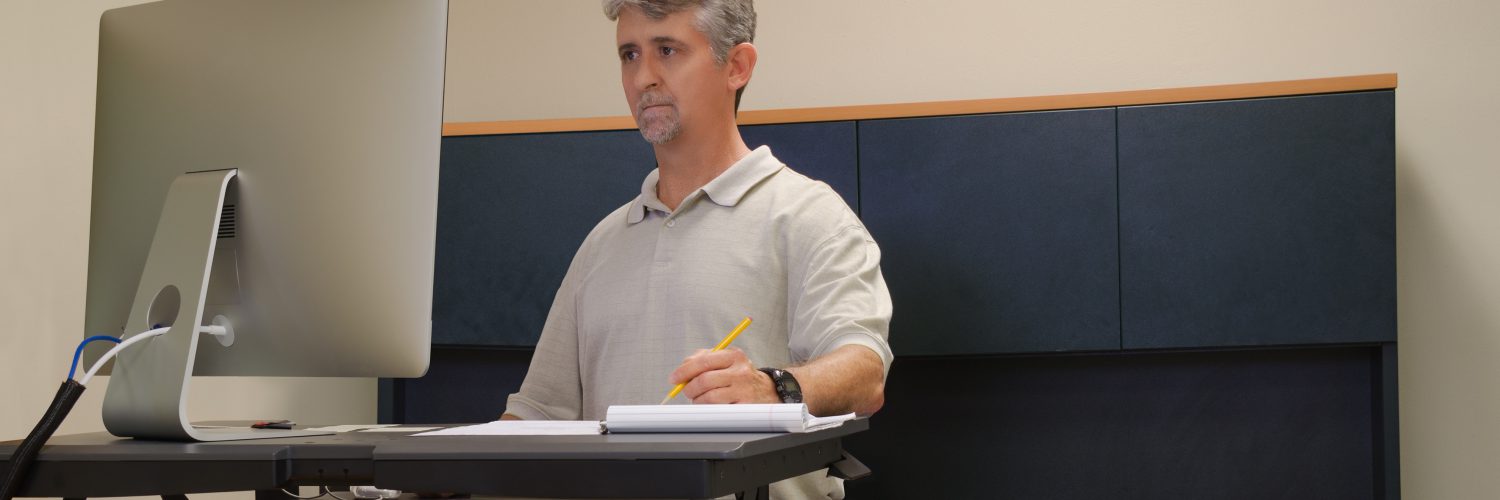Standing desks are beneficial for reducing sedentary behavior at work. They can relieve pressure on your lower back, buttocks and legs that results from prolonged sitting. Standing desks may also help boost energy levels, improve cognitive function, increase circulation and promote better blood flow, and help you burn more calories throughout the day. If you’re fortunate to have a standing desk available to you it is important that you maximize the benefits of this helpful tool. These tips can help!
Set yourself up for success
Positioning your monitor, keyboard and mouse appropriately can help improve your posture and make it more comfortable to work at a standing desk. Check your workspace to make sure you’re set up correctly.
- The top of your monitor should be at or slightly below eye level. Your monitor should be placed at least 20 inches from your face.
- Your keyboard and mouse should be on the same level surface. Position them so that you can use them without extending your arms. Your elbows should be almost at 90-degree angles when using them.
Watch your wrists
Be sure that your wrists stay straight and avoid leaning them on your desk as you type and use your mouse.
Stop the slump
Be mindful of your posture. Stand up straight, keep your shoulders back and chin out and parallel to the ground to avoid slouching. If you find your shoulders starting to roll forward, roll them back and hold for 10 seconds. The act of purposefully holding should help this become more instinctual over time.
Be flexible with footwear
Using a standing desk requires making accommodations with footwear. Wear comfortable shoes that provide adequate support for standing. High heels, stiff or thin-soled shoes are probably not good options while standing.
Take sitting breaks
Standing burns more calories than sitting which is great! But it comes with a trade-off: more calories burned=less energy. Allow yourself to rest and alternate sitting with standing throughout the day.
Manage your productivity
Tracking your sitting and standing patterns can be distracting and take away from your workload. Schedule your position changes in a way that is conducive with keeping up your productivity. For example, if you concentrate better while sitting, save more challenging tasks for this time, and easier tasks while standing, and vice versa.
Keep moving
While standing desks help reduce sedentary behavior, it is still important to move throughout the day. Be sure to step away from your desk, take walks or do some quick stretches to avoid being stationary. Click here and here for ideas!
For Health Advocate members
If you’re a Health Advocate member with access to the wellness coaching component of our Wellness Program, contact a Wellness Coach today for more great tips to help you be healthy at work!



